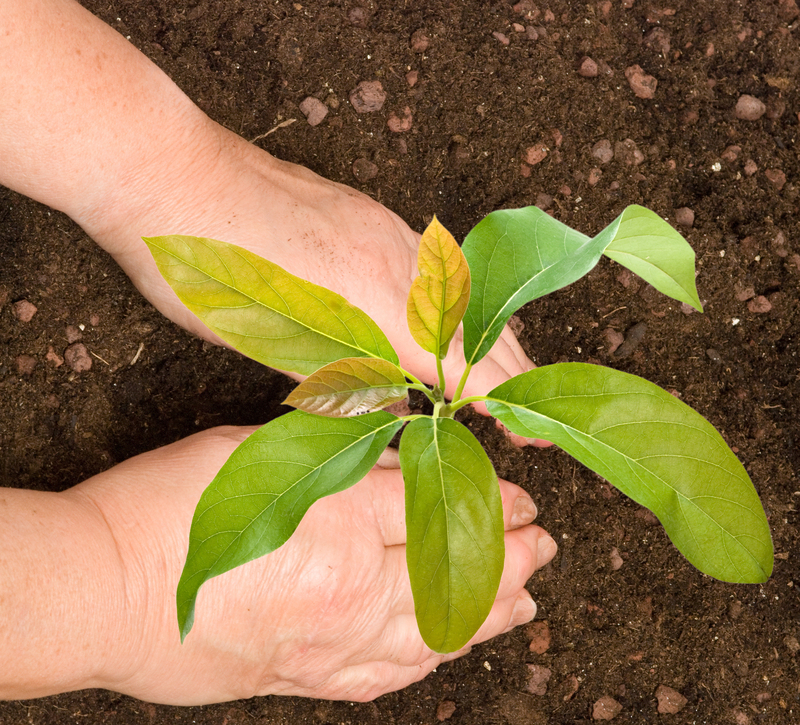Breathtaking Blooms: Orchid Care Techniques
Posted on 14/08/2025
Breathtaking Blooms: Orchid Care Techniques
Orchids have captivated gardeners and plant lovers for centuries with their spectacular blooms, exotic shapes, and stunning range of colors. However, maintaining the health and vibrancy of these exquisite flowers often seems daunting to both beginners and enthusiasts. If you've ever wondered how to care for orchids and encourage them to produce breathtaking blooms, this comprehensive guide will equip you with the essential orchid care techniques needed to nurture your beautiful plants.

Why Orchids Are Unique: Understanding Your Plant
With over 25,000 species and more than 100,000 hybrids, orchids are among the largest and most diverse plant families in the world. Their remarkable ability to adapt to various environments makes them both fascinating and tricky to care for at times. Understanding what makes orchids different from your typical houseplant is the cornerstone of successful orchid care.
- Epiphytic Growth: Many popular orchid species (like Phalaenopsis and Cattleya) are epiphytes, growing naturally on trees rather than in soil.
- Specialized Roots: Orchid roots are often thick, covered with a spongy layer called velamen that absorbs moisture and nutrients from the air.
- Sensitivities: Despite their hardiness in nature, most orchids are sensitive to changes in watering, light, and air movement.
- Adaptive Beauty: Orchid flowers can last for weeks, sometimes even months, offering long-term beauty and enjoyment.
Essential Orchid Care Techniques
1. Choosing the Right Orchid
- Phalaenopsis (Moth Orchid): Popular for beginners and indoor growers. Known for long-lasting and abundant blooms.
- Cattleya: Famous for large, fragrant flowers, ideal for sunny windowsills.
- Dendrobium: Features cane-like stems and a variety of bloom shapes.
- Oncidium and Paphiopedilum: Known for their unique flower structures and variable care requirements.
Tip: Select an orchid variety that best matches your home's lighting and humidity conditions to simplify care.
2. Understanding Light Requirements
Orchids thrive in environments that mimic their natural habitats. Light is crucial, influencing everything from foliage health to flowering cycles.
- Bright, Indirect Light: Place your orchid near an east or west-facing window, filtered with sheer curtains if needed.
- Avoid Direct Sunlight: Strong afternoon sun can scorch orchid leaves, causing irreparable damage.
- Leaf Color Cues: Healthy orchid leaves are bright green. Dark green leaves indicate insufficient light, while yellowish tones mean too much light.
- Artificial Lighting: For windowless rooms, use fluorescent or LED grow lights designed for plants.
Essential Orchid Care Hack: Rotate your orchid every week to ensure even exposure and symmetrical growth.
3. Perfecting the Watering Routine
Improper watering is the most common orchid care mistake. Both overwatering and underwatering can stress your plant, leading to root rot or desiccation. To encourage breathtaking orchid blooms, mastering the correct watering schedule is key.
- Check the Potting Mix: Water when the top inch of medium feels dry to the touch, usually every 7-10 days.
- Avoid Standing Water: Never allow your orchid to sit in water; always empty saucers after watering.
- Water Quality: Use room-temperature, distilled, rain, or filtered water. Hard tap water may cause mineral buildup.
- Watering Method: The best method is thoroughly soaking the potting mix, allowing excess water to drain freely.
Quick Tip: Orchids often prefer to be drier than wetter. It's better to underwater slightly than to overwater!
4. Humidity and Air Circulation
Orchids generally flourish in humidity levels between 40% and 70%. Adequate air movement is equally important to prevent diseases and support strong root health.
- Humidity Trays: Set your orchid pot above a tray of water with pebbles to maintain humidity without wetting the roots.
- Misting: Lightly mist leaves (not flowers) during dry spells or winter.
- Air Circulation: Use a gentle fan or open windows regularly to keep air moving around your orchid collection.
Note: Excessive humidity without enough air movement can create the perfect conditions for fungal problems.
5. Choosing the Best Potting Mix and Pots
Orchid roots breathe; potting them in regular soil is a surefire way to kill your plant. Instead, always use specialized orchid potting mixes and pots with ample drainage.
- Bark Mix: Most common and suitable for Phalaenopsis; encourages drainage and air to roots.
- Sphagnum Moss: Retains more moisture; favored for seedlings or very dry climates.
- Clay or Plastic Pots: Choose pots with several drainage holes; clear plastic pots are helpful for monitoring root health.
- Repotting: Re-pot your orchid every 1-2 years, ideally after flowering or when the potting medium breaks down.
Pro Tip: When repotting, always trim off any mushy or blackened roots with sterilized scissors to prevent disease.
6. Feeding Your Orchid: Fertilizing Strategies
Proper feeding ensures healthy leaves and supports prolific orchid blooms. Orchids aren't heavy feeders, but they do require essential nutrients.
- "Weakly, Weekly" Rule: Apply a balanced orchid fertilizer at 1/4 strength every week during active growth.
- Flushing: Water your orchid with plain water every four weeks to wash out any fertilizer salts.
- Bloom Boosters: Use a fertilizer higher in phosphorus during bloom season to encourage more flowers.
- Leaf vs. Root Feeding: Avoid misting fertilizer directly onto leaves; feed at the root zone for best absorption.
7. Temperature Tactics for Brilliant Orchid Flowers
Temperature fluctuations are critical for encouraging orchid flowering:
- Daytime Temperatures: 65-75?F (18-24?C) is ideal for most orchids.
- Nighttime Drop: A 10-15?F (5-8?C) dip at night helps trigger flower spikes.
- Location: Avoid placing orchids near heating vents or cold drafts.
Tip: Place your orchid near a slightly open window at night during the fall to encourage flower spike initiation.
Caring for Orchids Year-Round
Spring & Summer
- Watering: Orchids may require more frequent watering and feeding during periods of active growth.
- Light: Increase exposure, but shield from harsh midday rays.
- Pest Checks: Look out for spider mites, mealybugs, and aphids attracted by warm weather.
Fall & Winter
- Water Less: Growth slows, so reduce watering and feeding frequency.
- Humidity: Use humidifiers or trays to combat dry indoor air from heating.
- Monitor for Flower Spikes: Many orchids initiate blooms as nights get cooler.
Common Orchid Problems and Solutions
- Yellowing Leaves: Typically caused by overwatering or old age. Prune off old leaves and improve drainage.
- Root Rot: Remove the plant from its pot, trim affected roots, and repot in fresh orchid mix.
- Failed Blooms: Boost light exposure and check for necessary temperature drops at night.
- Pest Infestations: Treat with insecticidal soap or neem oil, isolate the infected plant immediately.
- No Flowers: Evaluate lighting, feeding, and temperature triggers. Patience is key--some orchids bloom only once a year!
Encouraging Re-Blooming: Tricks for Spectacular Orchid Flowers
Achieving breathtaking blooms isn't just about keeping your orchid alive--it's about optimizing every factor to trigger those spectacular flowers repeatedly.
- Cut Back Spent Spikes: On Phalaenopsis, trim the spent flower spike just above a node to encourage a new branch of flowers.
- Respect Dormancy: Some orchids, like Cymbidiums and Dendrobiums, require a rest period with cooler temperatures and less watering.
- Don't Disturb: Avoid repotting or fertilizing when a flower spike is developing.
- Boost Humidity: Increased humidity can trigger certain species into flower after dormancy periods.
Growing Orchids Indoors: Creating Your Home Orchid Haven
For the urban dweller or apartment gardener, indoor orchid care is both highly rewarding and easily achievable with a few key strategies:
- Display Locations: Well-lit bathrooms often offer ideal humidity and filtered light. North or east windows are great choices.
- Grouping: Cluster orchids together to help maintain humid microclimates.
- Orchid Stands: Decorative stands raise pots for better air circulation and display.
- Orchid Terrariums: Glass containers can house miniatures or mounted orchids, controlling humidity and aesthetics.

The Joys of Orchid Care: More Than Just a Hobby
Growing orchids at home is a magnificent journey into the world of diversity, patience, and beauty. As you master these orchid care techniques, you'll be rewarded not only with breathtaking blooms but also with the profound satisfaction of nurturing delicate, living art. Your attentiveness will transform even the most stubborn orchid into a consistent performer, one bloom at a time.
Bonus FAQ: Orchid Care Insights
- How frequently do orchids bloom?
*Most orchids bloom once or twice a year, with flowers lasting several weeks. Some, like the Moth Orchid (Phalaenopsis), may bloom for much longer.* - Can I grow orchids outdoors?
*If you live in a frost-free climate, many orchid species thrive outdoors in filtered light.* - Is it difficult to grow orchids from seed?
*Growing orchids from seed is incredibly challenging and requires lab conditions. Most hobbyists propagate by dividing mature plants.*
Conclusion: Unlock the Secret to Dazzling Orchid Blooms
Caring for orchids may seem mysterious, but with the proper orchid care techniques, anyone can enjoy the unparalleled beauty these plants offer. Remember:
- Provide bright, indirect light
- Use a suitable potting mix
- Water wisely--never let roots sit in water
- Maintain good humidity and air flow
- Feed with diluted fertilizer, especially during growth
By sticking to these principles and learning from experience, you'll soon turn your home into a haven for stunning orchid blooms that leave everyone in awe. So, don't be intimidated--embrace the adventure, nurture your orchids with love, and watch as they reward you with their breathtaking beauty!
For more tips, resources, and expert advice on orchid care and breathtaking blooming techniques, bookmark this page and join our community of orchid enthusiasts!

